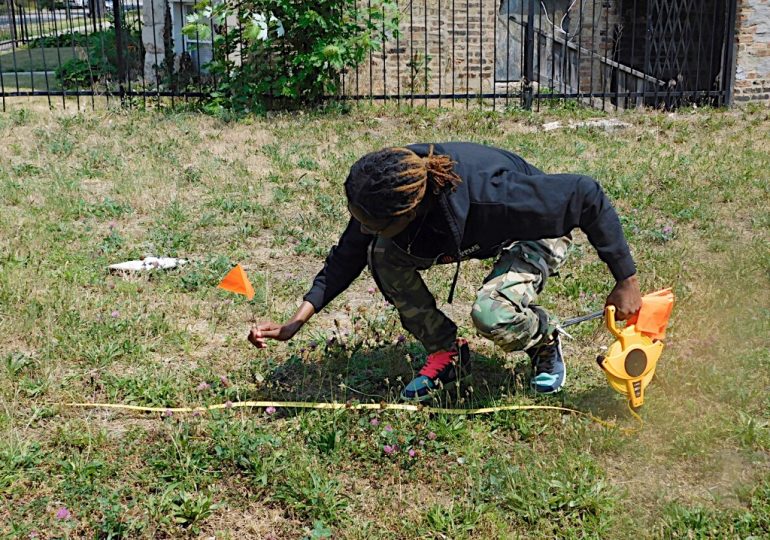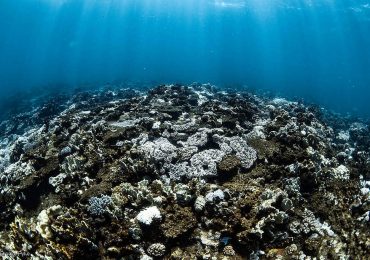Ensuring that traditionally disinvested Black and Brown communities are not left behind is essential for a just transition away from carbon-based energy sources.
At the same time, many of these communities have vast stretches of vacant or underutilized properties, which could present opportunities for clean energy development.
For instance, in Detroit, city officials are working with DTE Energy to build 33 MW of solar arrays on vacant property around the city. Detroit’s mayor has touted the project as a way to deal with blight while producing clean energy, but neighbors are divided.
Meanwhile, in the West Woodlawn neighborhood on Chicago’s South Side, a community-based geothermal project is intentionally bypassing vacant lots, focusing instead on placing the necessary loop fields in alleyways.
“Not every block in the neighborhood even has a vacant lot that could be leveraged,” said Andrew Barbeau, president of The Accelerate Group in Chicago, which is providing technical assistance for the geothermal pilot, in an email. “Further, communities often have other ambitions for that land, whether it is new housing development, parks, greenways, or other beneficial uses.”
For Blacks in Green, the Chicago-based organization leading the geothermal project, recognition of the role of the project within a broader scope is central to an overall goal of generating economic development and a healthy environment within the community, said Nuri Madina, Sustainable Square Mile director, who serves as point person for the pilot.
“We know that the communities have been underserved. And underserved by definition means that we have not gotten our fair share of taxpayer investment in the communities. We know what our streets look like. And one of the major assets in the community, which is not really viewed as an asset, is our vacant lots,” Madina said.
The geothermal pilot
Conventional geothermal systems require substantial plots of land to lay the subterranean loop fields that circulate both hot and cold water — land that is often scarce in densely populated urban areas.
But while West Woodlawn has a number of vacant lots, they are not being utilized for the project. Instead, alleys provide a potential solution for constructing geothermal loop fields, along with allowing for connection points for houses and multifamily buildings within the pilot footprint, Barbeau said.
“The good news is that based on the system design, we have more than enough capacity in the alleys to serve the load of the blocks we have modeled. The modeling also so far is showing us that the shared network model would require 20-30% less wells than if each home built their own system,” Barbeau said in an email.
Locating the bulk of the geothermal infrastructure in alleyways also sidesteps the underground congestion of existing gas, electric and water infrastructure on city streets, said Mark Nussbaum, owner and principal of Architectural Consulting Engineers in Oak Park, Illinois.
“There’s a lot of stuff happening out near the street. It doesn’t mean it’s not possible to coordinate it, but it’s just what’s nice about the alley concept is, it’s kind of unused for utilities typically,” Nussbaum said.
The O’Shea solar farm on Detroit’s West Side. (City of Detroit) Credit: City of Detroit
Blank slate versus bright future
“White flight” and housing segregation have left many U.S. cities with sections of vacant or underinvested property, typically in communities populated by Black and Brown people.
With roughly 60% of the land area of Chicago, Detroit nonetheless has a much larger proportion of vacant land — approximately 19 square miles. In some neighborhoods, multiple blocks may only have a single structure remaining, if any at all.
DTE Energy’s plan to build large-scale solar arrays on some of that land is supported by some residents and municipal officials as a means to reduce illegal dumping and other nuisance crimes while working toward meeting city climate goals — and reducing utility bills for residents.
But there has also been pushback, largely focused on potential detrimental impact on property values in adjacent properties and limitations on future use of the sites themselves.
“Solar panels will disrupt and destroy entire neighborhoods. There will be no future affordable housing being built anywhere around a solar farm,” councilmember Angela Whitfield-Calloway said during a city council meeting in July, as reported by Planet Detroit.
Whitfield-Calloway also questions why municipal buildings or sites outside the city limits had not been considered for the solar arrays.
In Chicago, a battery storage facility constructed as part of the Bronzeville Microgrid project administered by electric utility ComEd generated similar debate during an extended period of community input. ComEd officials said the location of the battery facility, in the middle of a stretch of vacant plots near the South Side Community Art Center, was strategic to the overall microgrid project.
A 40-foot mural designed and created by local artists and mounted on the exposed long side of the battery storage facility not only serves to obscure the structure, but also to highlight prominent figures in Black history and culture. While reactions to the mural have been overwhelmingly positive, reception of the battery storage facility itself has been mixed.
“There were thorough talks with the community and the art community in Bronzeville about what they wanted, what [ComEd] planned to do [with] that battery station, because they did not want it to be an eyesore … they did not want it to just be, you know, brick walls around infrastructure,” Jeremi Bryant, a resident of Bronzeville, told the Energy News Network in February 2021.
For Bruce Montgomery, founder of Bronzeville-based Entrepreneur Success Program and a member of the advisory council for the Community of the Future, the location of the battery storage facility precluded potentially more beneficial future development for the site.
“That lot in most communities probably would have ended up being invested in as more quality residential,” Montgomery told the Energy News Network in February 2021. “But now you’ve taken it up with this box car. … You’ve got big things sitting out in the middle of a vacant lot a couple of doors down from one of the most historic locations in Bronzeville.”
While the Bronzeville mural has been a welcome addition, other views of the storage battery make clear it is an industrial facility. (Lloyd DeGrane photo) Credit: Lloyd DeGrane/Energy News Network
Creating ‘multiple benefits’
For Blacks in Green, what might appear to the casual observer as a vacant lot overtaken by weeds belies its ultimate potential — as an affordable, energy-efficient residential complex, small business owned by a community resident, a much needed basic amenity like a grocery stocking fresh produce — or a native plant garden to attract pollinators.
On June 17, 2023, Blacks in Green collaborated with the Delta Institute to hold a combined Juneteenth celebration and BioBlitz to identify potential sites for green infrastructure. Experts and community residents worked side-by-side to map and measure plant life, insect populations, drainage and other elements during a walking inventory of vacant lots in the area.
In the case of West Woodlawn, installation of geothermal loop fields in its alleys — versus locating them in vacant plots — presents an opportunity to promote climate resiliency through mitigation of persistent urban flooding, by utilizing permeable pavers to replace existing concrete or asphalt, said Madina.
“All of our programs are designed to create multiple benefits,” Madina said.
Projects like the West Woodlawn community geothermal project represent a drive to revive and reinvent Chicago’s Black Wall Street within what once constituted the redline-confined boundaries of the Black population drawn to the city during the Great Migration of the 20th Century.
“In most communities, the vacant lots are really indicative of a declining community. But what we have tried to do is take that negative and turn it into something positive. So if we can take those vacant lots with weeds and debris and turn them into beautiful gardens, that is a very significant improvement in the community,” Madina said.
“So [we] could improve the quality of life, improve the spirit of the people in the community… that vacant lot can provide more than just beauty. It can provide more than just comfort for the residents. It can also provide biodiversity, it can provide pollination, it can provide food for the residents.”
Vacant urban land poses complex questions for clean energy siting is an article from Energy News Network, a nonprofit news service covering the clean energy transition. If you would like to support us please make a donation.
Leave a comment






